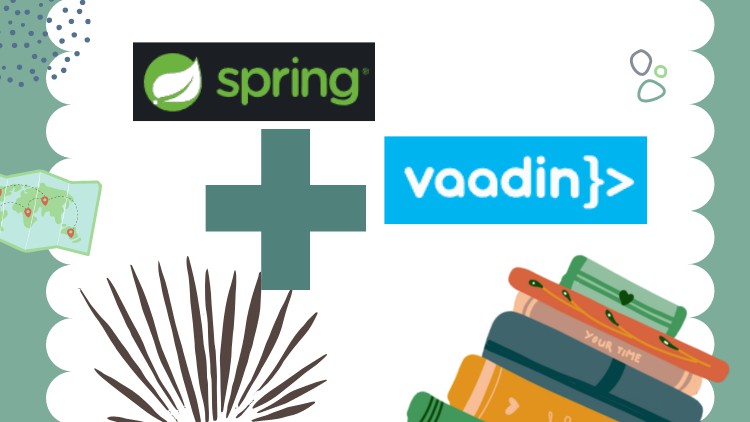
Vaadin 14-23+ (with Spring Boot) – working with MongoDB, PDF, MS Excel, Vaadin Push, GridFS
What you will learn
Create, step-by-step, a basic single-page Vaadin application
Using Vaadin @Push for websocket communication
Create MS Excel files from dynamic data, use advanced formatting, embed images, etc.
Create PDF files on-fly with nice formatting, images, barcodes
Using MongoDB as a persistent data store(database backend)
Manage file upload and download using MongoDB GridFS as data storage from your Vaadin applications
Create web applications without writing JavaScript or HTML directly
Description
Welcome to the ‘FullStack Vaadin (23+) – Practical Solutions’ course. With this course, you are going to add value to your existing JAVA and Vaadin 23+ (with SpringBoot) knowledge by getting familiar with several techniques for solving specifically selected areas of JAVA application development. Each topic involves a project configuration section but mostly covers practical solutions being split into several steps.
We will focus on several topics often useful in corporate JAVA development but not exclusively. SpringBoot is being used here as an underlying framework, but solutions presented here are not specific to this platform and can be reused e.g. with recent Quarkus support, etc. Java 11 is used in this course (required by Vaadin 23+), but the solutions provided here are Java 8 compatible and reusable with legacy applications.
The primary idea of this course is to help existing Vaadin developers to adopt certain knowledge in an easy way. The solutions presented are being used for several years in production-grade Vaadin applications and the libraries used are well-known for stability and active development. This will protect the value invested into adopting some libraries or projects.
What you’ll learn
- Create interactive application using modern LiveView like programming approach
- Use of Java for creating a full stack application (frontend / backend)
- Use of Push techniques for updating users from backend
- Create collaboration types of applications using popular LiveView approach
- Increase your programming speed 5x using Vaadin for building complex UIs
- Create highly maintainable and easy to read application code
- Add value to your existing SpringBoot development knowledge
Topics covered by this course:
During a course, we create a basic Vaadin single-page application and each lecture will add a new enhancement to it. Eventually, we create a single application with many different features.
- create a full featured single page application using VAADIN
- collaboration using server Push technology
- export application data in MS Excel format with formatting and some other features
- export application data in PDF format with formatting, embedded images or bar-codes
- including MongoDB as persistent data storage
- using GridFS as an attachment/file uploads data storage
An important part of this course is to realize ‘what we don’t need to do’ when using Vaadin. Simplification can be a huge and old saying that ‘the best code is the code you don’t have to write’ is proven here.
GitHub repository:
The source code is available through the link attached to the last lecture in this course. You can clone the repo and use the code snippets we are building in this course.
Who is this course for:
‘FullStack Vaadin – Practical Solutions’ course is targeted at individuals or small/medium teams of professional Java developers that want to be productive and competitive in this large market. Techniques presented here can be reused easily in application development of many kinds.
Note: The course video quality was increased recently. Now we are running video footage in 1080p depending on your bandwidth available.
Content